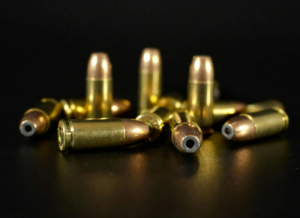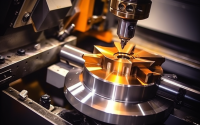Do Tungsten Penetrators Work Better Than Depleted Uranium?
Introduction
The question of whether tungsten penetrators work better than depleted uranium (DU) depends largely on the specific applications and the criteria used to define “better.” Both materials have unique properties that make them suitable for different aspects of military applications, particularly in armor-piercing roles. Here’s a breakdown of how tungsten and depleted uranium compare across various performance and environmental considerations:

Penetration Efficiency
1. Depleted Uranium:
– DU is renowned for its outstanding density and the unique ability to self-sharpen during penetration, which allows it to maintain an effective piercing shape as it cuts through armor. This property makes DU extremely effective against all types of armor, including reactive armor.
– The pyrophoric nature of DU can cause it to ignite upon impact with a target, increasing the likelihood of igniting the contents of an armored vehicle.
2. Tungsten Penetrators:
– Tungsten is slightly denser than DU and is also extremely hard, which contributes to its ability to penetrate hard targets effectively. However, it lacks the self-sharpening ability of DU, which means it might not maintain its effectiveness through thick or layered armor to the same extent.
– Tungsten does not have the pyrophoric properties of DU, so it does not ignite or cause additional fire damage upon penetration.
Related reading: Tungsten Penetrators: The Cutting Edge Of Armor-Piercing Technology
Environmental and Health Safety
1. Depleted Uranium:
– DU poses significant health and environmental risks due to its low-level radioactivity and chemical toxicity. Its use in ammunition can leave behind residues that contaminate the environment and pose health risks to humans for decades.
– The cleanup and management of DU contamination are complex and costly, adding a long-term burden on military and civil resources.
2. Tungsten Penetrators:
– Tungsten is considered safer for health and the environment compared to DU, as it is non-radioactive. However, some studies have raised concerns about the potential toxicological impact of tungsten compounds, suggesting that they may also pose health risks under certain conditions.
– The environmental impact of tungsten is generally less severe, making it a preferable choice in training scenarios and in regions where environmental preservation is a priority.
Cost and Availability
– Tungsten is generally more expensive than DU due to the cost of raw materials and processing.
– Depleted Uranium is cheaper and more readily available as it is a by-product of the uranium enrichment process needed for producing nuclear fuel and weapons.
Operational Considerations
– Depleted Uranium is often chosen for scenarios where maximum armor penetration is required due to its superior performance characteristics.
– Tungsten is favored when political, environmental, or health concerns rule out the use of DU. It is also used in training and non-combat scenarios to avoid the environmental contamination associated with DU.
Conclusion
Whether tungsten penetrators are “better” than depleted uranium depends on the specific military needs and the weighting given to environmental and health factors. For pure penetration capability, especially against heavy or reactive armor, DU may perform better. However, for applications where environmental impact and non-radioactivity are critical considerations, tungsten is often the preferred choice. Decisions between using DU or tungsten also involve ethical considerations, regulatory compliance, and long-term strategic planning by defense organizations. For more information, please check Advanced Refractory Metals (ARM).



